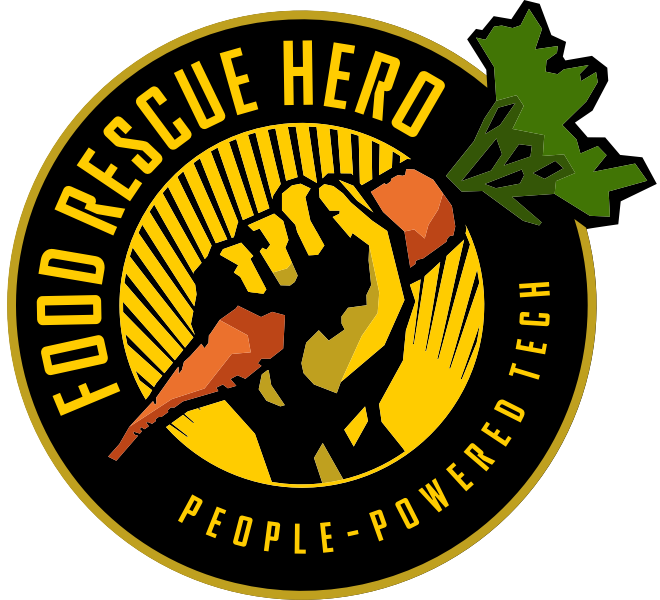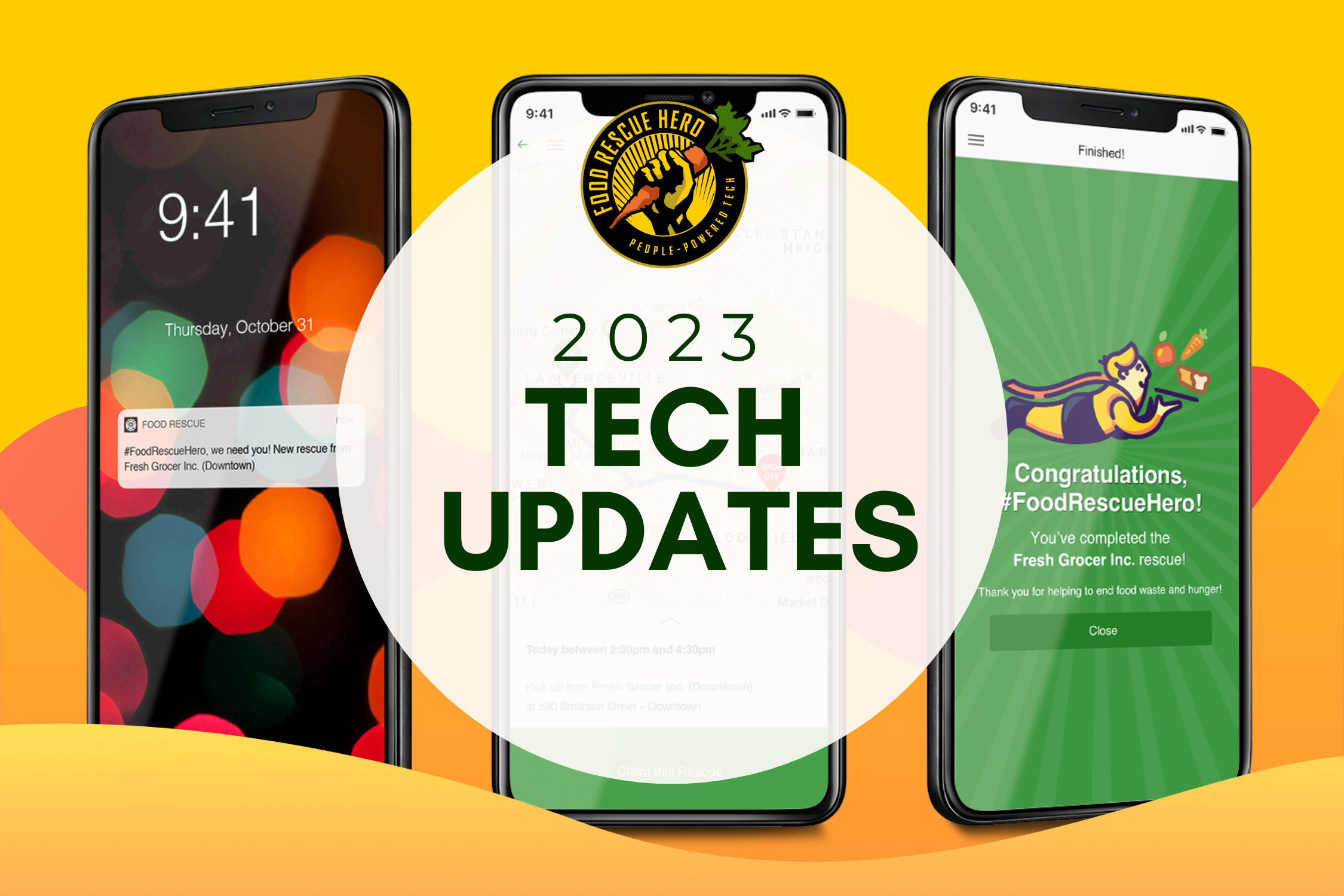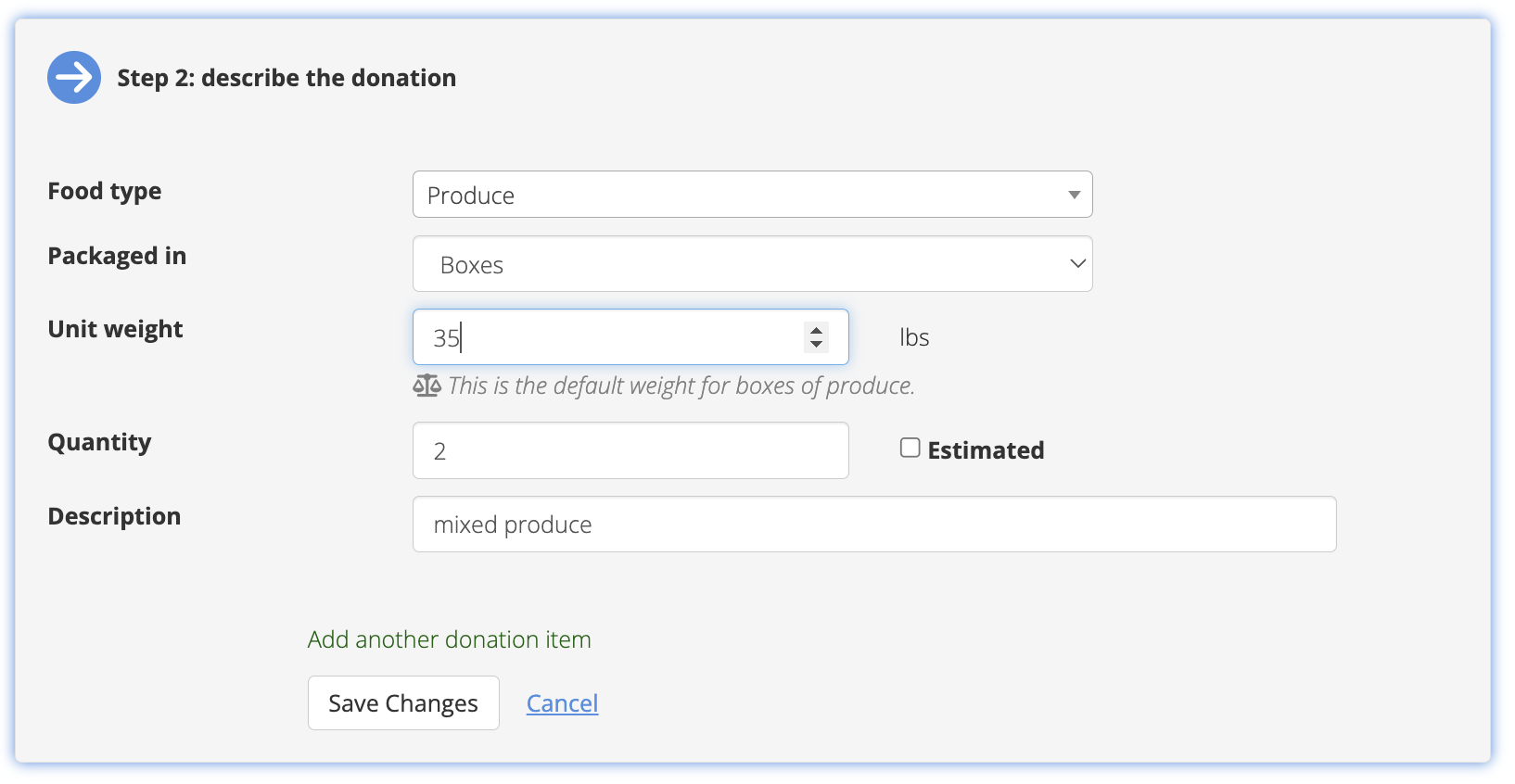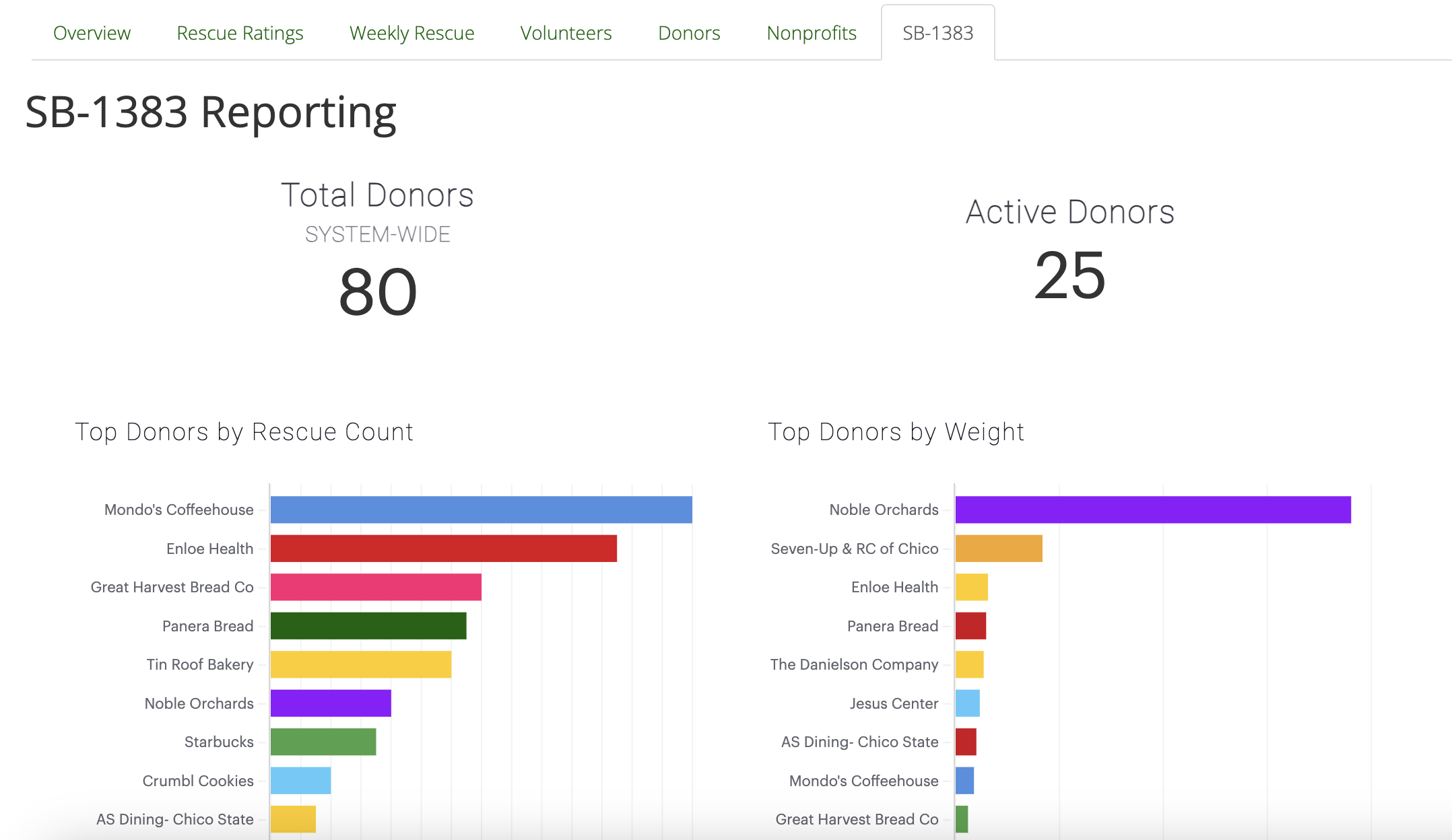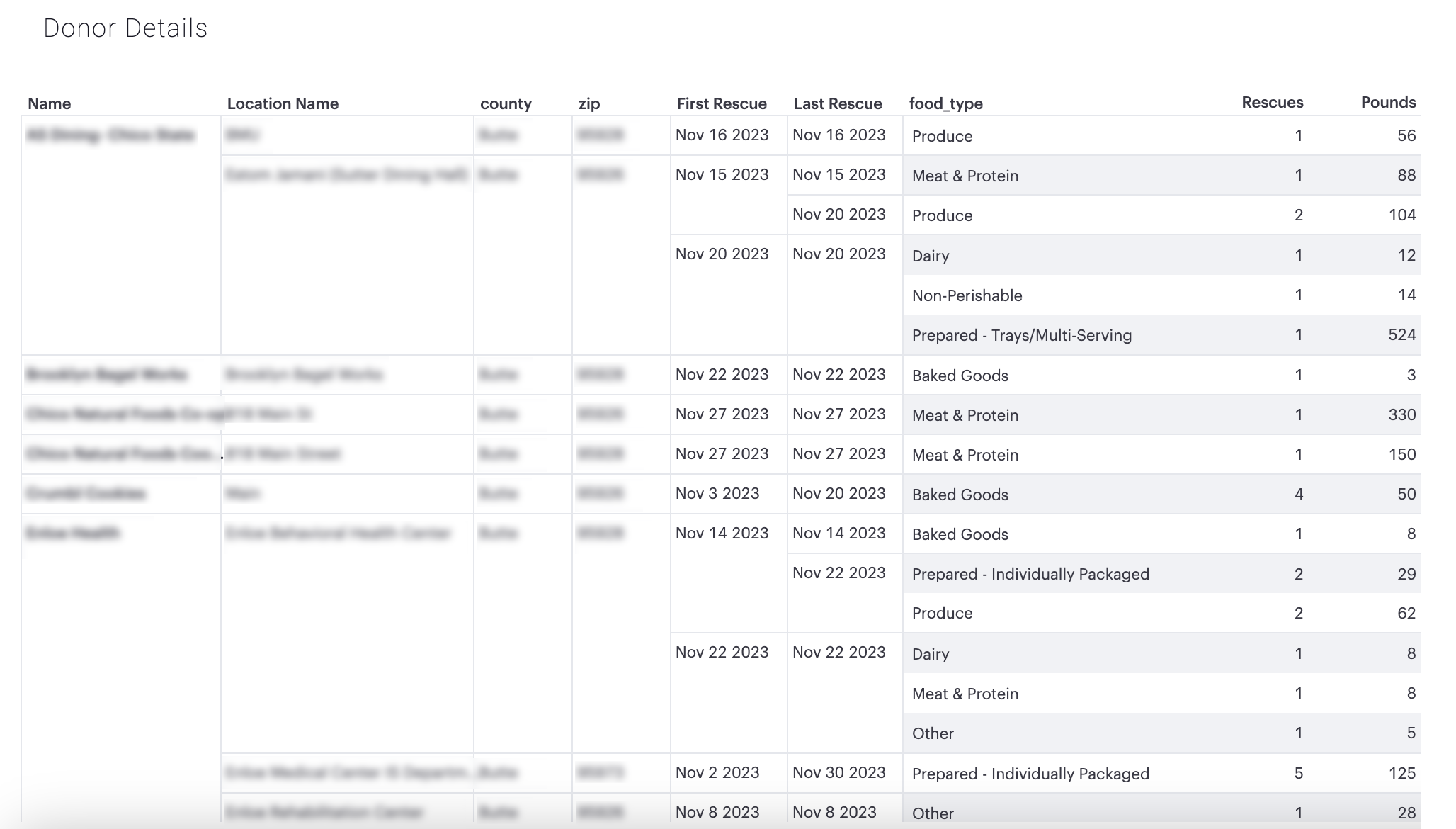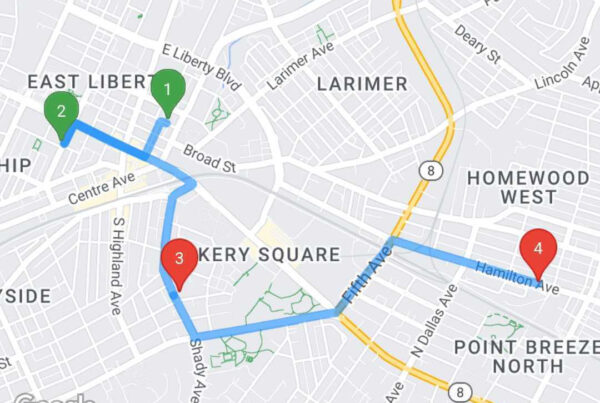In the ever-evolving landscape of food recovery, Food Rescue Hero aims to remain flexible and responsive in how we provide technology solutions that make food recovery more efficient and reportable—ultimately maximizing the amount of food rescued and increasing impact across our communities.
The feedback received from our current Food Rescue Hero™ Network partners has been invaluable, and was instrumental in shaping the enhancements we’ve introduced over the past year. From customizing the rescue publishing schedule to introducing push notifications and innovative features like Nonprofit Maps, we’re always improving the logistics of managing food rescue operations.
Enhancing the volunteer experience
Rescuing more food to expand food access is, of course, the goal of our work and we couldn’t do it without our Food Rescue Heroes. We are always looking for ways to improve their experience when using the app to claim and complete a food rescue.
We heard lots of feedback from our partners that two hours wasn’t always enough time to make sure a rescue gets claimed. So we added options for organizations to set their own rescue publishing schedule, up to six days in advance.
Our partners’ dispatchers also shared with us the frequency with which they need to check in with some volunteers about updating rescues they’ve claimed. So we added optional push notifications that can be sent to remind volunteers to start and/or complete their rescue.
It’s easy for volunteers to request a sub when they aren’t able to complete an upcoming rescue, but we heard from our partners that it can be stressful trying to make sure that a one-off rescue gets claimed. To make this task less burdensome, we made sure that rescues in need of a sub will trigger a push notification to volunteers.
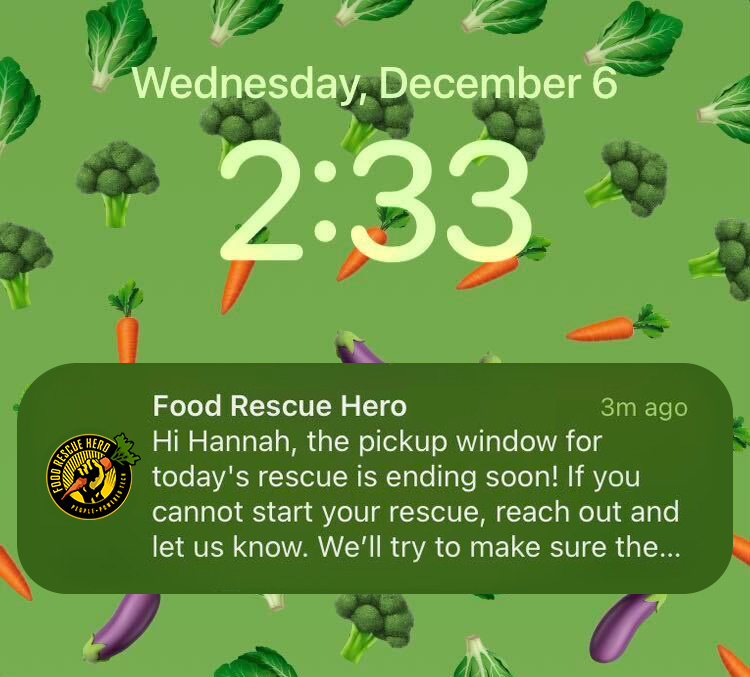
Streamlining dispatch tasks
The dispatchers on our platform are juggling many duties throughout the day: coordinating food donations, fielding calls from partners and volunteers, and monitoring rescues to make sure the day’s operations are running smoothly. Many of our improvements this year aimed to streamline common tasks.
Closing out rescues is critical for keeping accurate records, especially when a food donation is different from what is expected. This year, we made it much faster to update the contents of a donation. Rescues missing data are clearly flagged, so dispatchers know if the completed rescue needs attention. We’ve also allowed organizations to give volunteers more time to update a rescue they did, so that dispatchers don’t have to get in touch with the volunteer for each and every rescue that hasn’t been updated yet.

Dispatch is inherently reactive, so it’s important to have precise data, especially when things change. We’ve given our dispatchers more opportunities to keep that info in the web app, with the ability to add notes to volunteer profiles and the addition of more options for why a rescue was canceled.
We’ve also improved tracking of changes to rescues and volunteers, when subs are requested, when a notification is triggered, and whether its delivery was successful.
Decision making can be a burden on a dispatch team, especially when time is short. In 2023, we made improvements aimed at aiding those decisions. When adding an item to a donation, our system suggests a weight* depending on the type of food and the way it is packaged. This saves the dispatch team the time to more precisely determine an item’s weight and alleviates the reliance on dispatchers’ memories of what an item weighs.
*default weights are based on market/industry research for average weight
One of the most impactful decisions on the dispatcher’s plate is where to send a new donation. They must consider many factors, such as the distance from the donor, the site’s preferred food types, and the site’s operating hours. One of 2023’s biggest updates was the Nonprofit Maps feature, which puts the most critical info front and center (and on a map). Read more about the Nonprofit Maps feature →
Accurately measuring metrics & impact
Data is vital to any food recovery operation. Data demonstrates impact (which funders need to see), reveals blindspots (where action may be needed), and can inform strategic improvements.
A keystone metric in food recovery is the Missed Rescue Rate—how often a rescue isn’t completed due to not being claimed or the assigned volunteer missing the rescue. We’ve done the calculations for our partners and added the missed rescue rate to our Reports page.
California passed a new law (SB-1383), which aims to reduce food waste. It requires that a growing list of food waste producers (restaurants, supermarkets, schools, etc.) divert at least 20% of their food from the waste stream and ensure it feeds their communities. It’s an unprecedented opportunity for our partners in California that brings with it an unprecedented reporting requirement. Food Rescue Hero is rising to the challenge, with the introduction of a special Reports tab just for SB-1383 reporting needs.
Finally, we’re excited to introduce our latest innovation: a pioneering measure within the Food Rescue Hero platform that calculates the tangible environmental benefits of each individual food rescue based on its makeup of foods.
Previously, all food recovery organizations could use a generic calculation based on averages to estimate their environmental impact – but it wasn’t specific to the organization or actual food being rescued. Using ReFed’s impact calculator, our team integrated different factor levels for each food type directly into the native reporting in our platform. So when a Food Rescue Hero Network partner looks at their impact and the entire Network impact, they’re seeing actual specific data for every piece of food their volunteers and staff have recovered.
Food Rescue Hero is constantly working to make food recovery more efficient and impactful, and we’re always looking to incorporate partner feedback when possible. This past year saw some incredible improvements and we’ve got even more planned for 2024 – stay tuned!
